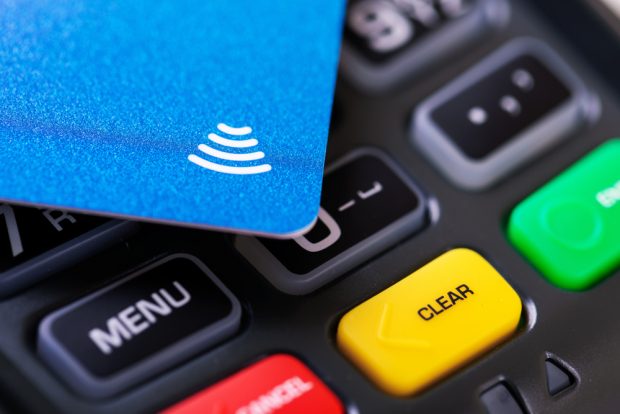Use of contactless payments expected to increase dramatically. (Source: Shutterstock)
By Tina Orem
Source: www.cutimes.com, March 2020
“In this moment in time, issuers must increase awareness of the contactless feature on their cards.”
Contactless payments may soon accelerate due to the spread of coronavirus, according to new survey data from payments research company, The Futurist Group.
The New York City-based firm’s analysis of over 3,000 structured consumer reviews found that the perceived importance of contactless payments has increased significantly in the weeks since coronavirus began dominating the headlines.
Prior to the spread of the virus, 30% classified contactless payments as “basic, I need this.” On March 3, however, that number rose to 38%.
Similarly, prior to the virus spread, 41% said they “don’t need” contactless payments. But on March 3, that number fell to 33%.
“While this is early data, and more time is needed to assess the real and lasting impact on consumer behavior, this is an indication that the tipping point for contactless usage in the U.S. may arrive faster than anticipated,” The Futurist Group said.
“In this moment in time, issuers must increase awareness of the contactless feature on their cards,” it said. “Targeted marketing efforts must go beyond explaining the functionality and instead educate consumers about all benefits that contactless can offer. Responsible communication should prioritize those who are at the highest risk for infection.”
Contactless payments are already on a tear, according to a February report from Juniper Research.
That company forecasted that global contactless transaction values would reach almost $6 trillion in 2024, up from $2 trillion in 2020. In the United States, it predicted, transaction values would rise from $178 billion in 2020 to $1.5 trillion in 2024.
“The research found that growth will be fueled by the promotion of contactless cards by major U.S. banks, reductions in the costs associated with issuing contactless cards in the U.S. and their increasing use in the ticketing space,” it said.
Players in the credit union space have already been making moves in contactless payments.
In November, for example, the St. Petersburg, Fla.-based CUSO PSCU announced that it had distributed more than 500,000 contactless cards to members from 14 credit unions and that it expected to produce more than three million new contactless cards for more than 100 credit unions in 2020.
Much of its owner credit unions’ contactless card distribution has occurred through natural reissuance and its efforts next year would also support mass reissuance strategies, it said.
“Credit unions should be prepared to not only offer contactless cards to their members, but also have information readily available to educate members on how to use these new payment methods and ascertain whether a merchant’s point-of-sale terminal is contactless-enabled,” PSCU Digital Experience and Payment Products Managing Vice President Jeremiah Lotz said at the time.

